Finding Enough in the Forest
Reflections from Labor Day
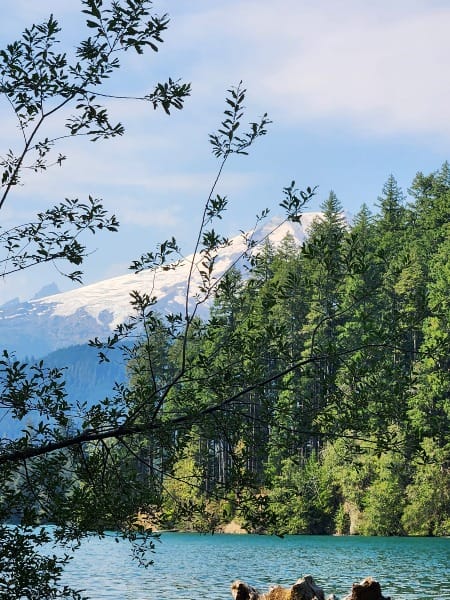
On Monday, Americans celebrated Labor Day—or, merely enjoyed a day off. The holiday, its roots in organized labor, now arrives with little reflection. The nation's unions are suffering, one of the many targets of the current administration, so most Americans who enjoyed the unofficial end of summer probably spent little time considering unions.
Instead of thinking about collective bargaining rights, many Americans took to nature for a final camping trip, a late-season float down a river, or, like me, a hike in the trees.
This year, my daughter and her partner were visiting, so we headed up the Skagit River with a plan for a short hike in North Cascades National Park Service Complex.
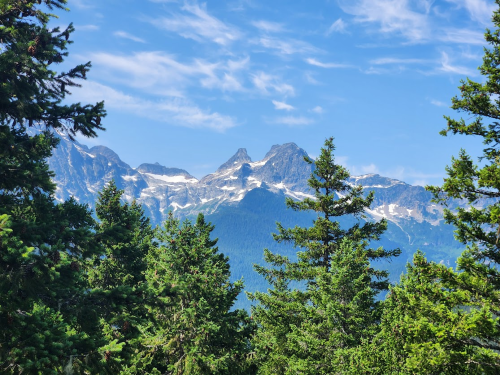
I've done the hike a couple times before, including once with my daughter. She wanted to show it off. It is a showy hike with spectacular mountain and water views, with trees to supply regular shade. At the right time of year, wildflowers are breathtaking.
She'd been talking about sharing the hike since we started planning the visit months ago. So we were disappointed as we moved up the mountains and felt the air getting smokier and smokier. By the time we reached an overlook, we knew that for our lungs' sake, we needed to forgo the planned hike and find another way to enjoy a Northwest forest.

The smoke, we learned later, came from the Perry Fire, about 14 miles away. It had grown from 50 acres last Thursday to more than 700 on Tuesday, another sign of perilous climate change and its growing influence on our lives.
Disappointed but undeterred, we headed back downstream and then up the Baker River tributary of the Skagit where clear skies welcomed us. We stopped briefly for a roadside lunch and a quick walk through the Shadow of the Sentinels interpretive trail. Here, in a quick half-mile, you can gain a sense of ecological succession in wet westside forests and see some remnant big Douglas firs that suggest the type of majestic forest that once covered this part of the world.
Not for the first time, I marveled at these trees. I understood why 19th-century lumbermen coveted these trees for their mills. They tower in the forest. They are straight as a ruler. They lack branches for the long distance it takes to get to the crown. In short, what great trees to turn into boards!
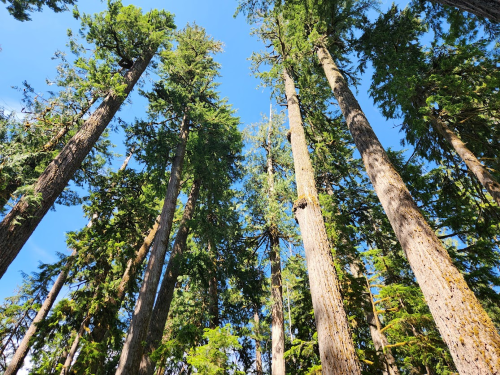
I can appreciate the species' qualities, even if I find the assault the timber industry practiced on these forests. That included decades of clearcutting across the Pacific Northwest, an appalling act of vandalism. It has endangered many other species including most famously the northern spotted owl. It has hollowed out timber towns with its rapacious cut-and-run practices that were the rule, not the exception.
After our brief interpretive walk, we headed to the east side of Baker Lake, parked, and plunged into the woods.
The walk through the forest might have been anywhere in the coastal Northwest. Mostly coniferous, the trees represented all stages—from decaying into the earth and providing seed ground for the next generation of trees to standing snags and thick-trunked giants. Some stumps showed springboard notches as evidence of earlier loggers' work. Others showed signs of past fires.
Moving through a forest is to navigate layers of time. As John Fowles put it in The Tree (1979), "But trees warp time, or rather create a variety of times: here dense and abrupt, there calm and sinuous—never plodding, mechanical, inescapably monotonous."
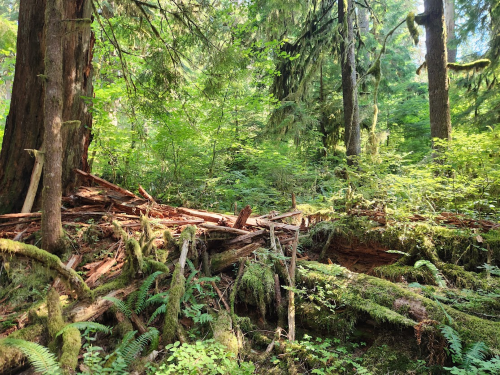
When walking in the woods, I try to pay attention. But a Northwest forest can feel at times too abundant to track for someone without a doctorate in botany. I admire naturalists but have not developed their skills. I have studied ecologists but cannot see with their eyes. None of this means I am blind to the forest's beauty; I'm only lamenting that I cannot see all that is there.
Still, one moment arrested me in my tracks as I walked the trail.
A slight breeze picked up and touched a cedar branch. Behind me the sun filtered through the branches. Against the trunk, the shadow of the cedar leaves—flat and splayed out and known as scales—danced and swayed, jumping this way and that. The light and motion captivated me. My spouse noted how it might have mesmerized a baby.
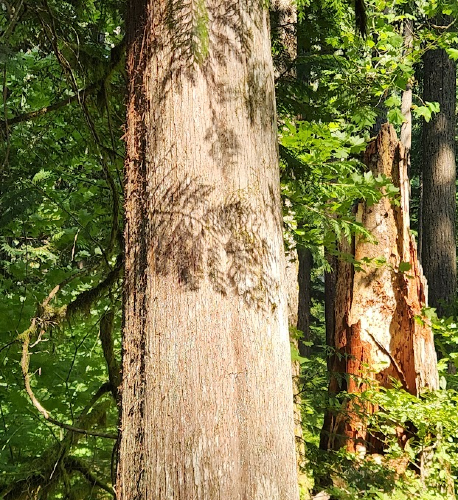
We walked on until we hit a small stream at the precise moment the sun lit up a large stone. Precise and bright, it seemed like a sign. After a pause, we turned back, grateful. I even paused to hug a tree.
Those moments—when the shadow danced and when the light illuminated rock—defined the day for me, two small moments that were enough. Increasingly, I want my days to have just that—moments of enough.
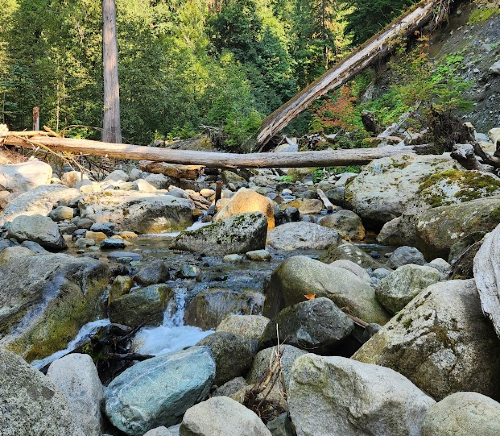
I cannot end an essay about Labor Day and trees, though, without noting that I have had an evolving relationship with this convergence. Growing up, Labor Day was the traditional day when we headed to the woods on land we leased and cut down trees. During most of my years at home, we heated our house with a fireplace, and Labor Day was when we began to replenish the woodpile.
Dad cut the trees and sawed them in pieces, scattering sawdust on the ground in patterns that invited investigation. I collected the wedges he first cut out of the trunks. We filled the tractor scoop that loaded the dump truck. Once in a while, Dad stopped to sharpen the chainsaw, the sound of which I could still recognize in a blindfolded lineup of mechanical whirrings. We tried to avoid stinging nettles and blackberry brambles where the trees sometimes fell.
We worked hard until we had enough; Labor Day was no day off.
Those moments add up, memories I can conjure forty years on, of time in the woods before the last summer sunset.
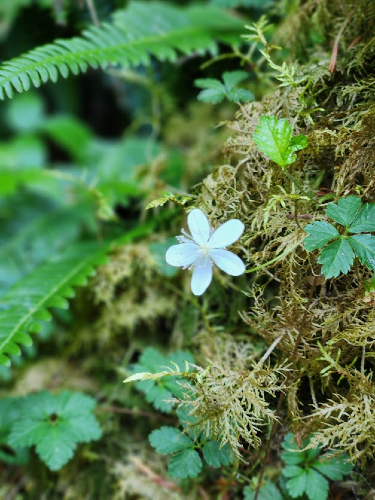
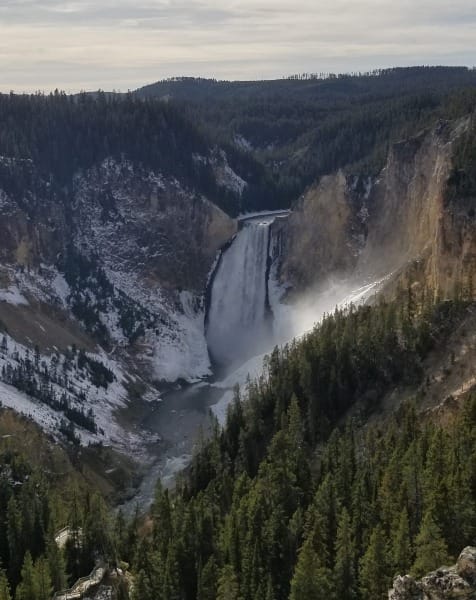
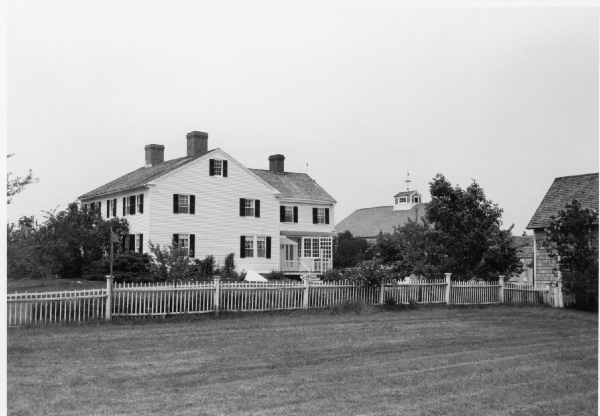
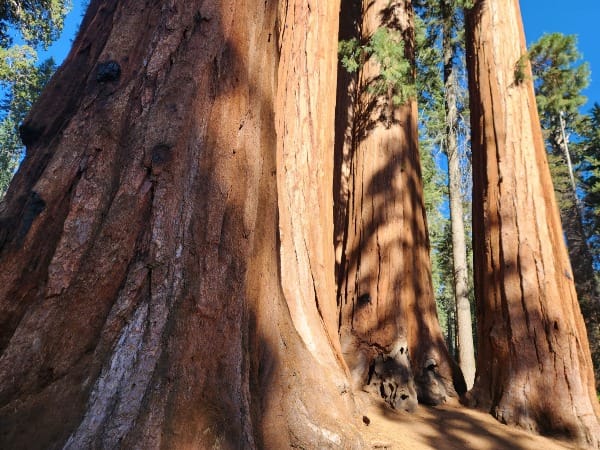
Comments ()